Multi-Unit Property Septic Systems: Expert Guide
Multi-unit property septic systems are designed to handle wastewater from multiple residential or commercial units on a single property. These systems are larger and more complex than traditional single-family home septic systems, requiring specialized design, installation, and maintenance to function properly.
Key Takeaways
- Multi-unit property septic systems serve multiple residential or commercial units
- Larger tanks and drain fields are needed to handle increased wastewater volume
- Regular maintenance is crucial for system longevity and performance
- Professional design and installation are essential for proper functioning
- Local regulations may impact system requirements and permitting
Understanding Multi-unit Property Septic Systems
Multi-unit property septic systems are engineered to process and treat wastewater from multiple sources within a single property. These systems are commonly used in apartment complexes, condominiums, and commercial buildings where connecting to a municipal sewer system is not feasible or cost-effective. Professional Septic Tank Pumping Services
Components of multi-unit septic systems
The basic components of a multi-unit property septic systems are similar to those of a single-family system but on a larger scale. These include:
- Septic tanks: Larger or multiple tanks to handle increased wastewater volume
- Distribution boxes: To evenly distribute effluent to the drain field
- Drain fields: Expanded areas for final treatment and dispersal of wastewater
- Pumps: Often needed to move wastewater through the system
Capacity considerations
When designing a multi-unit septic system, capacity is a critical factor. The property septic systems must be able to handle peak flows during high-use periods without becoming overloaded. Factors that influence capacity requirements include:
- Number of units served
- Number of occupants per unit
- Water usage patterns
- Type of fixtures and appliances in each unit
Professional engineers use these factors to calculate the appropriate system size and design to ensure proper function and compliance with local regulations.
Design and Installation Challenges
Designing and installing a multi-unit property septic system presents unique challenges compared to single-family systems. These challenges require careful planning and expert execution to create a reliable and efficient wastewater treatment solution.
Site evaluation
Before designing a multi-unit septic system, a thorough site evaluation is necessary. This process involves:
- Soil testing to determine percolation rates
- Assessing groundwater levels and proximity to water sources
- Evaluating available space for tanks and drain fields
- Considering topography and natural drainage patterns
The results of this evaluation guide the system design and help determine if additional treatment components are needed.
System layout and configuration
The layout of a multi-unit property septic systems must account for the property’s unique characteristics and usage patterns. Common configurations include:
- Centralized systems: A single large system serving all units
- Clustered systems: Multiple smaller systems each serving a group of units
- Hybrid systems: Combining centralized and clustered approaches
Each configuration has its advantages and drawbacks, and the choice depends on factors such as property layout, soil conditions, and maintenance considerations.
Regulatory compliance
Multi-unit property septic systems must comply with local, state, and federal regulations. These rules often differ from those governing single-family systems and may include:
- Stricter design and performance standards
- More frequent inspections and monitoring requirements
- Specific permitting processes for large-scale systems
Working with experienced professionals familiar with local regulations is crucial to ensure compliance and avoid costly mistakes.
Maintenance and management
Proper maintenance is essential for the longevity and performance of multi-unit property septic systems. Regular care helps prevent system failures, which can be costly and disruptive to multiple residents or businesses.
Routine maintenance tasks
Key maintenance activities for multi-unit septic systems include:
- Regular pumping of septic tanks
- Inspection of distribution boxes and pumps
- Monitoring of drain field performance
- Cleaning or replacing filters and screens
The frequency of these tasks depends on system size, usage patterns, and local regulations.
Professional services
While some maintenance tasks can be performed by property staff, many require professional expertise. Services often needed for multi-unit systems include:
- Annual inspections by certified septic professionals
- Specialized pumping services for large tanks
- Repair and replacement of system components
- Water quality testing and analysis
Building a relationship with a reliable septic service provider can help ensure consistent, high-quality maintenance.
Tenant education
Educating tenants about proper septic system use is crucial for preventing problems. Important topics to cover include:
- What can and cannot be flushed or poured down drains
- Water conservation practices
- Signs of potential system issues to report
Clear communication and posted guidelines can help minimize tenant-caused system problems.
Advanced Treatment Options
In some cases, traditional property septic systems may not be sufficient for multi-unit properties. Advanced treatment options can provide additional wastewater processing capabilities to meet stricter environmental standards or overcome site limitations.
Aerobic treatment units
Aerobic treatment units (ATUs) use oxygen to enhance the biological breakdown of waste. Benefits of ATUs include:
- Higher quality effluent
- Smaller drain field requirements
- Better performance in challenging soil conditions
However, ATUs require more frequent maintenance and have higher operating costs than traditional systems.
Recirculating sand filters
Recirculating sand filters provide additional treatment by passing effluent through layers of sand and gravel. Advantages of these systems include:
- Excellent removal of pathogens and nutrients
- Ability to handle variable flow rates
- Reduced drain field size requirements
Sand filters require careful design and regular maintenance to function properly.
Constructed wetlands
Constructed wetlands use natural processes to treat wastewater through a series of planted basins. Benefits of wetland systems include:
- Low energy requirements
- Habitat creation for wildlife
- Aesthetic appeal for property landscaping
Wetland systems require significant land area and may not be suitable for all climates.
Cost Considerations
The cost of installing and maintaining a multi-unit property septic system can be significant. Understanding the various expenses involved helps property owners budget appropriately and make informed decisions.
Initial installation costs
Factors affecting installation costs include:
- System size and complexity
- Site conditions and preparation requirements
- Local labor and material costs
- Permitting and inspection fees
A detailed cost estimate from a qualified contractor is essential for accurate budgeting.
Ongoing expenses
Regular expenses associated with multi-unit property septic systems include:
- Routine maintenance and pumping
- Electricity for pumps and advanced treatment components
- Replacement of worn parts
- Water quality testing and reporting
Property owners should factor these ongoing costs into their long-term financial planning.
Return on investment
While the upfront costs of a multi-unit property septic systems can be high, there are potential long-term benefits:
- Lower monthly utility costs compared to municipal sewer connections
- Increased property value in areas without public sewer access
- Greater control over wastewater treatment and environmental impact
Careful system selection and maintenance can maximize these benefits and provide a positive return on investment over time.
Environmental Impact and Sustainability
Multi-unit property septic systems can have significant environmental implications. Proper design and management are crucial for minimizing negative impacts and promoting sustainability.
Groundwater protection
Protecting groundwater quality is a primary concern for property septic systems design. Measures to safeguard groundwater include:
- Adequate separation between drain fields and the water table
- Proper sizing to prevent system overload
- Regular monitoring of effluent quality
These practices help ensure that treated wastewater does not contaminate drinking water sources.
Nutrient management
Excess nutrients from septic systems can harm local ecosystems. Strategies for nutrient management include:
- Using advanced treatment systems to remove nitrogen and phosphorus
- Designing larger drain fields to improve nutrient uptake
- Incorporating plants that absorb excess nutrients in landscaping
Effective nutrient management helps protect nearby water bodies from algal blooms and other environmental issues.
Water conservation
Promoting water conservation can reduce the load on multi-unit septic systems and extend their lifespan. Tactics include:
- Installing low-flow fixtures and appliances
- Implementing greywater reuse systems where permitted
- Educating tenants about water-saving practices
These efforts not only benefit the septic system but also contribute to overall water resource conservation.
Troubleshooting Common Issues
Even well-designed and maintained multi-unit septic systems can experience problems. Recognizing and addressing issues promptly is crucial for preventing system failures and costly repairs.
Signs of system stress
Common indicators of septic system problems in multi-unit properties include:
- Slow-draining sinks and toilets in multiple units
- Foul odors near drain fields or septic tanks
- Wet or spongy areas in the drain field
- Algae blooms in nearby ponds or streams
Property managers should investigate these signs immediately to prevent more serious issues.
Diagnostic approaches
When troubleshooting multi-unit septic systems, professionals may use various diagnostic tools:
- Camera inspections of pipes and tanks
- Dye testing to track water flow
- Soil probing in drain fields
- Water quality testing of nearby wells or surface water
These methods help pinpoint the source of problems and guide repair efforts.
Remediation strategies
Depending on the issue identified, remediation strategies might include:
- Pumping and cleaning of septic tanks
- Repairing or replacing damaged pipes or components
- Expanding or rehabilitating drain fields
- Upgrading to more advanced treatment systems
In some cases, temporary measures like reduced water usage may be necessary while long-term solutions are implemented.
Future Trends in Multi-unit Septic Technology
The field of multi-unit septic systems continues to evolve, with new technologies and approaches emerging to address challenges and improve performance.
Smart monitoring systems
Advanced monitoring technologies are becoming more common in multi-unit septic systems. These include:
- Real-time sensors for flow rates and effluent quality
- Automated alerts for potential system issues
- Remote monitoring capabilities for off-site management
These systems allow for proactive maintenance and faster response to problems.
Modular and scalable designs
Newer septic system designs focus on modularity and scalability, offering benefits such as:
- Easier expansion to accommodate property growth
- Simplified replacement of individual components
- Greater flexibility in system configuration
These designs can help property owners adapt to changing needs over time.
Resource recovery
Emerging technologies aim to recover resources from wastewater, including:
- Heat recovery systems to capture thermal energy
- Nutrient extraction for fertilizer production
- Water reuse systems for irrigation or non-potable uses
These innovations can improve the sustainability and cost-effectiveness of multi-unit septic systems.
Conclusion
Multi-unit property septic systems play a vital role in wastewater management for many residential and commercial properties. While they present unique challenges in design, installation, and maintenance, these systems can provide effective, environmentally friendly wastewater treatment when properly managed. septic system inspections
Property owners and managers considering multi-unit septic systems should work closely with experienced professionals to ensure their systems are appropriately designed, installed, and maintained. By understanding the key components, challenges, and best practices associated with these systems, stakeholders can make informed decisions that benefit both their properties and the surrounding environment. Septic System Repair Burleson, Tx
As technology continues to advance, multi-unit septic systems are likely to become even more efficient and sustainable. Staying informed about new developments and best practices will help property owners and managers maximize the performance and longevity of their wastewater treatment systems. For more information, you can visit our website or contact us. (Here some reference for Types of Septic Systems)
| System Type | Advantages | Disadvantages | Typical Applications |
|---|---|---|---|
| Centralized Conventional | – Simple design- Lower initial cost- Easier maintenance | – Large drain field required- Limited treatment capability | – Small to medium apartment complexes- Clustered homes |
| Clustered Advanced Treatment | – Smaller drain fields- Better effluent quality- Flexibility in layout | – Higher initial cost- More complex maintenance- Requires electricity | – Large apartment complexes- Condominiums- Commercial properties |
| Maintenance Task | Frequency | Performed By | Importance |
|---|---|---|---|
| Tank Pumping | Every 3-5 years | Professional | High |
| System Inspection | Annually | Professional | High |
| Effluent Filter Cleaning | Every 6-12 months | Property staff or Professional | Medium |
| Drain Field Monitoring | Monthly | Property staff | Medium |
| Water Quality Testing | As required by regulations | Professional | High |
- Tenant education topics for proper septic system use:
- Avoid flushing non-biodegradable items
- Use water-efficient appliances and fixtures
- Report unusual odors or slow drains promptly
- Avoid parking or placing heavy objects on the drain field
- Redirect roof drains and surface water away from the septic system
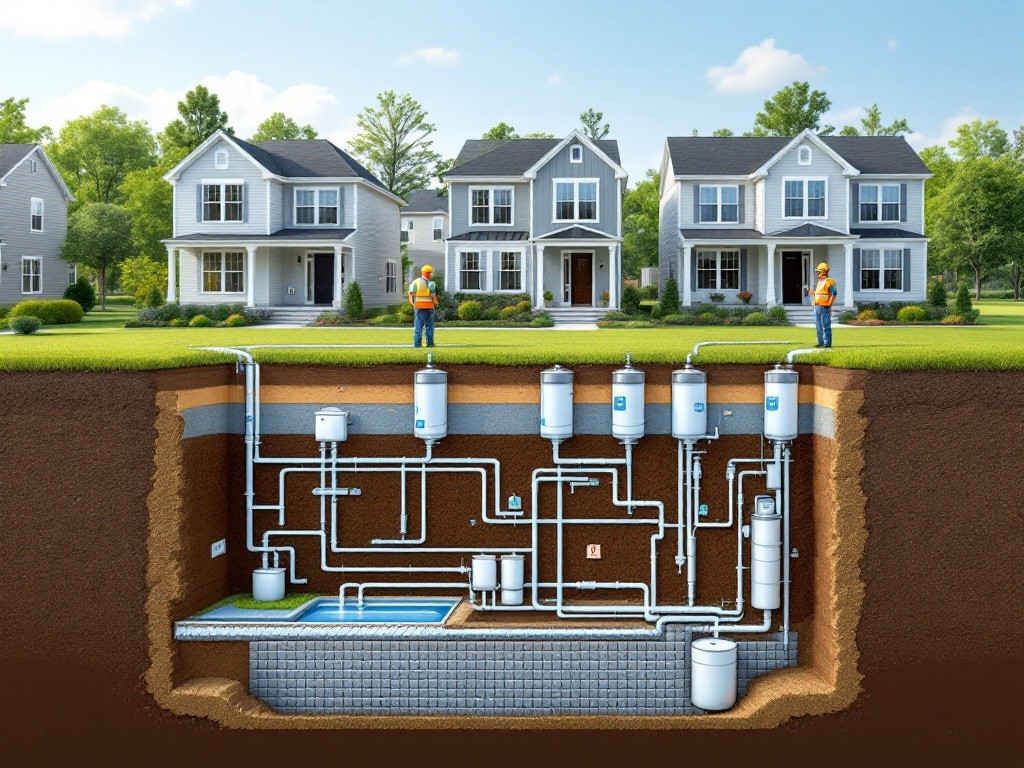



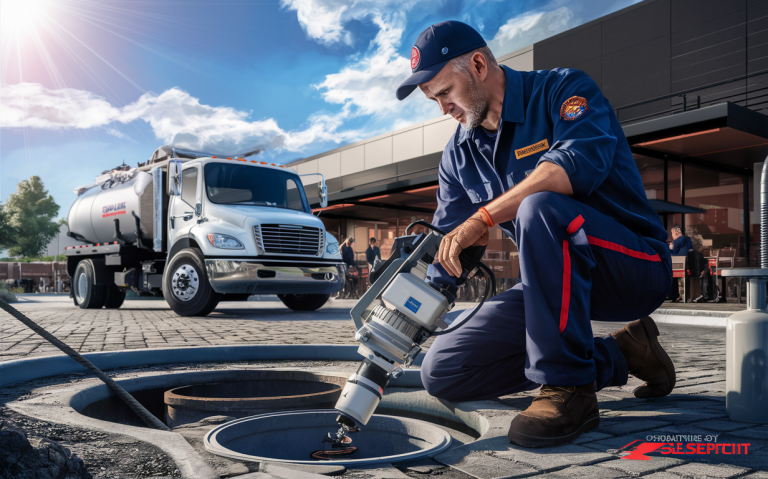


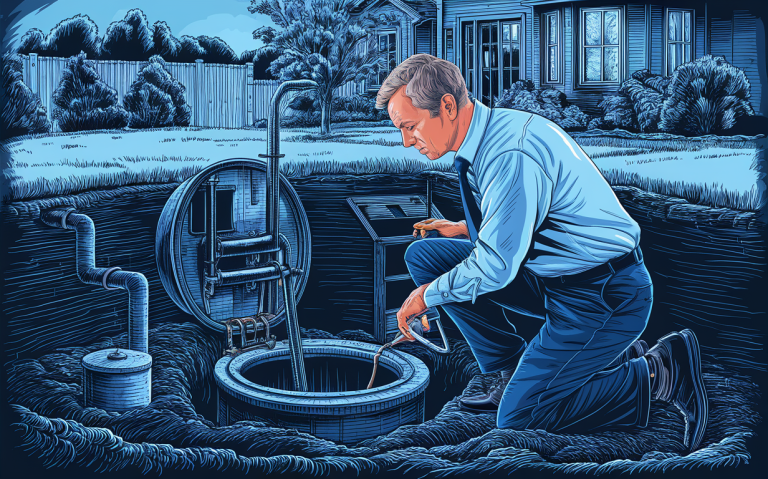
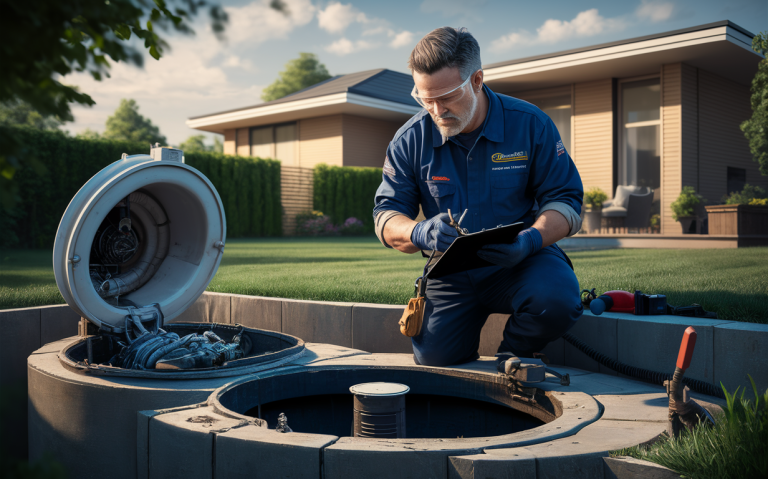
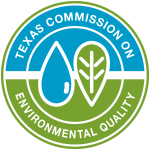 Texway Wastewater Services is a septic, wastewater, and excavation company based out of Burleson, Texas and serving the surrounding areas. We specialize in
Texway Wastewater Services is a septic, wastewater, and excavation company based out of Burleson, Texas and serving the surrounding areas. We specialize in